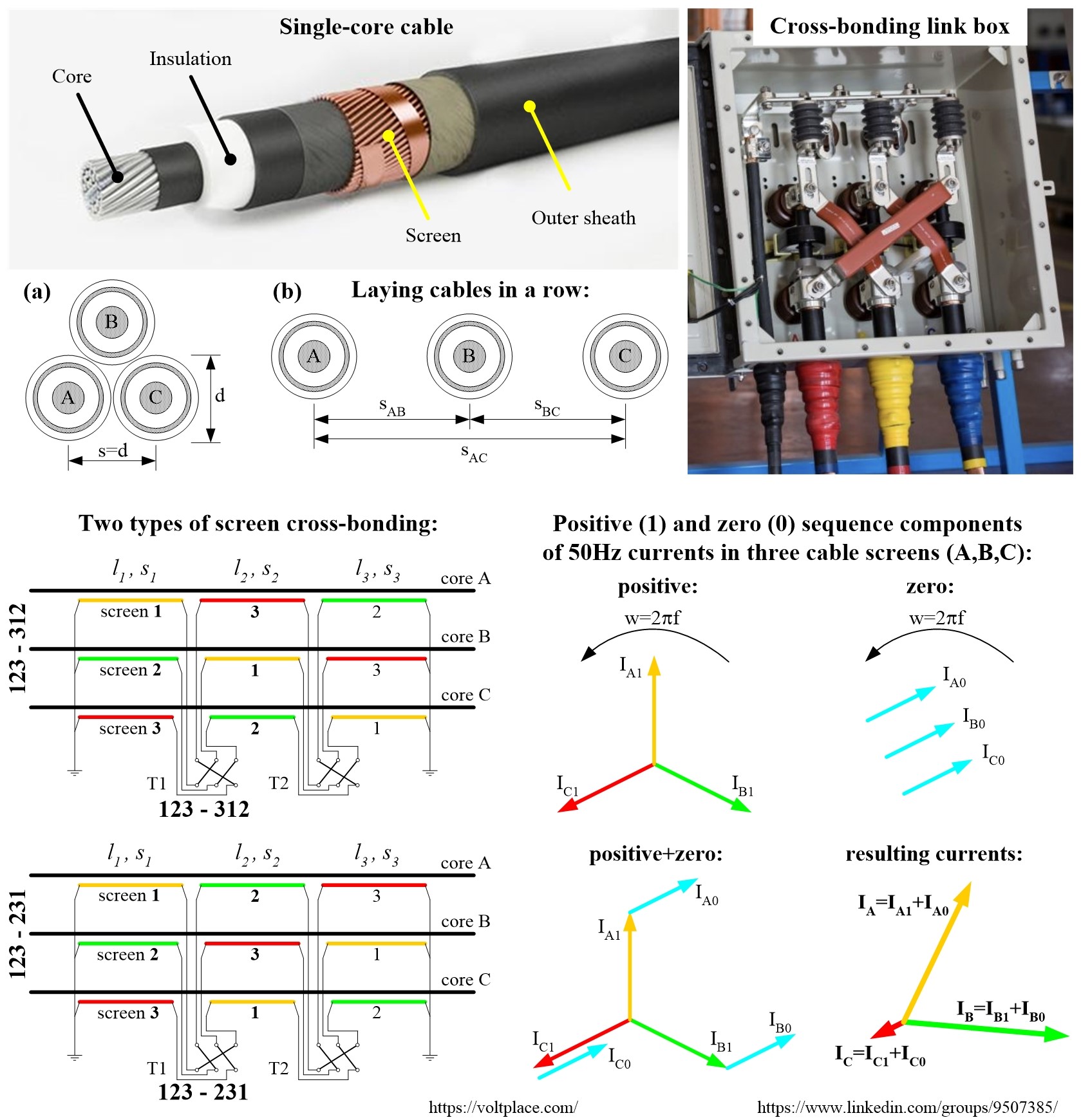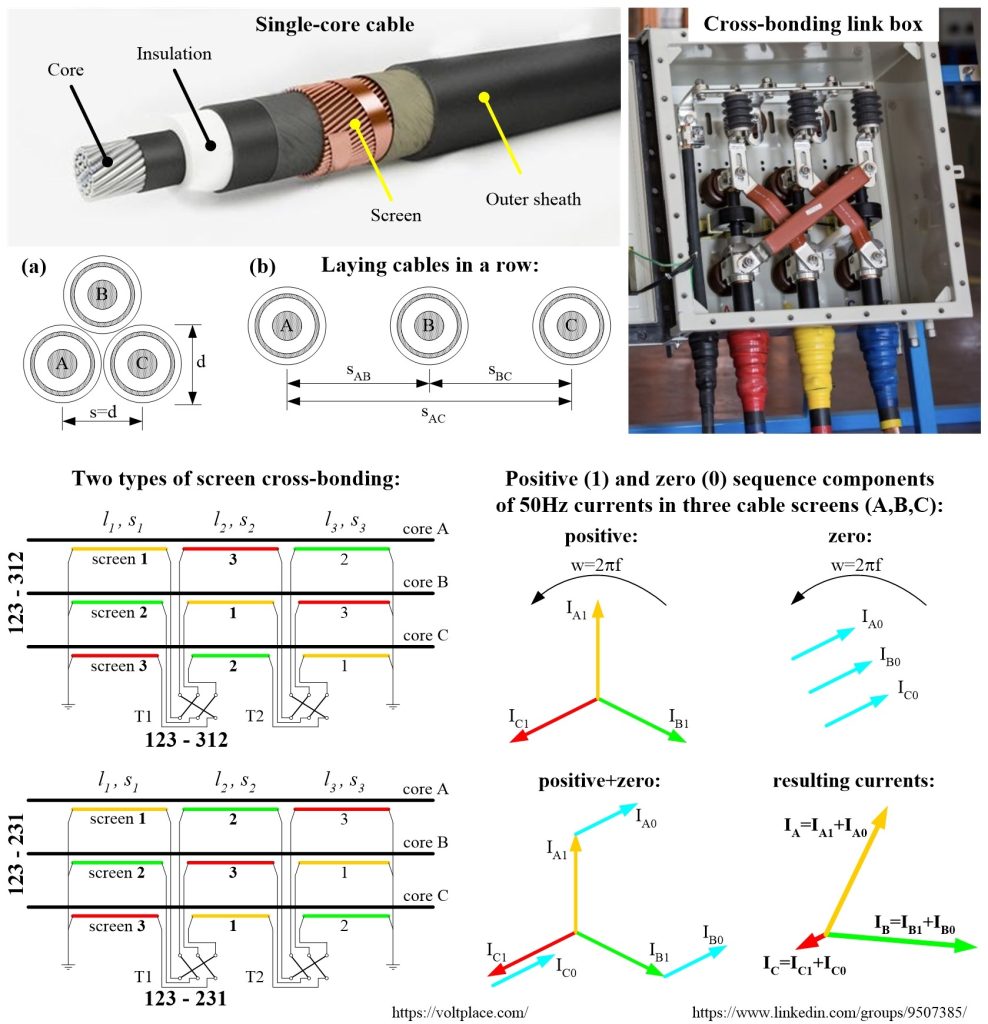
Two types of screen cross-bonding
In 6-500 kV networks, single-core cables with XLPE insulation are widely used. Such cables have conductive screens. In such screens, if they are grounded at both ends, AC 50 Hz currents are induced in normal mode and active power losses occur. This leads to additional heating of the XLPE, a decrease in the long-term permissible current of the cable line, and increased losses of active power for the transmission of electrical power.
To combat currents and losses in screens, there are two main options:
✅One-sided grounding of screens (for lines up to 500-1000m long);
✅Screen cross-bonding (for lines longer than 1000-1500m).
Let’s focus on the cross-bonding. It is expected that in the case of a properly designed line, the currents in the screens should be minimal. If, in the process of monitoring the currents in the screens, it turns out that they are either large in magnitude or noticeably different from each other in magnitude, then this is perceived as a reliable signal in order to suspect damage in the cable line or in its cross-bonding scheme.
I must regret that the difference in currents in the screens is not a reason to suspect the presence of some kind of malfunction on the line. I can give examples when, even for a fully functional line with a cross-bonding of screens, the currents in three screens (1,2,3) differed up to 5-10 times from each other. To understand the reasons for this difference, we have to admit that there are two types of cross-bonding:
✅Type 123-312
✅Type 123-231

In normal mode, even for cable line with IDEAL (L1=L2=L3, s1=s2=s3) screen cross-bonding, there are still 50 Hz currents pass through screens:
✅Positive-sequence capacitive currents
✅Zero-sequence inductive currents
The “positive” currents are determined by the capacitance between the core and the screen, to which the phase voltage of the network is applied. The “zero” currents are determined by the difference in mutual inductances between cables A,B,C, which is especially noticeable when laying cables in a row (when laying a triangle, zero sequence currents will be absent).
The currents in the screens are determined by the sum of positive-sequence capacitive currents (Ia1, Ib1, Ic1) and zero-sequence inductive currents (Ia0, Ib0, Ic0). Depending on the type of cross-bonding (123-312 or 123-231), the angles between these positive and zero currents will be different, and therefore the resulting current vectors in the screens (Ia, Ib, Ic) will look different.
Usually, if the cables are in a row (left A, center B, right C), and the cross-bonding has the type 123-231, then the currents in the screens will differ from each other less than in the case of 123-312.
Anyway, when performing a cross-bonding, we should:
✅Pay attention to which type of cross-bonding is better in our case.
✅Do not perceive the difference in currents in screens as a reason to disconnect the cable line and spend time identifying the causes of this difference.
